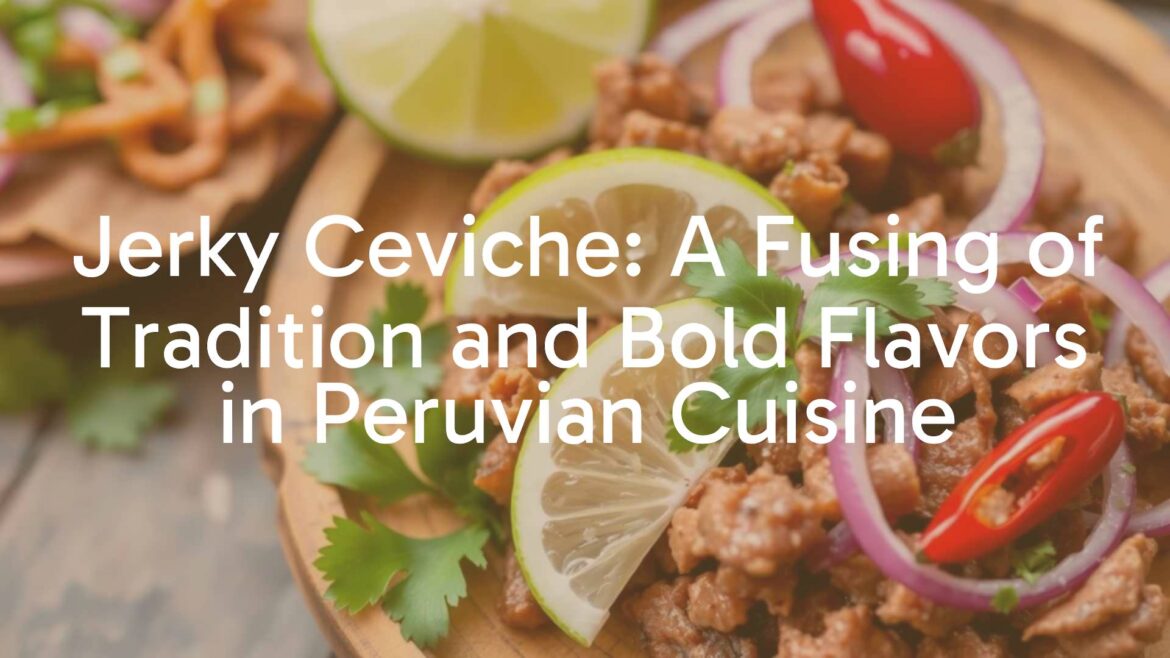Discovering Jerky Ceviche: A Unique Variation of a Peruvian Classic
Among the many ingenious dishes found within Peruvian gastronomy, jerky ceviche—also known locally as “ceviche de charqui” or “ceviche de cecina”—stands out for its creative adaptation of the widely renowned ceviche. Instead of the customary raw fish, this regional specialty utilizes dried and salted beef, known as “charqui” or “cecina,” offering a distinctive take on the national dish. This twist on ceviche exemplifies Peru’s resourcefulness in fusing indigenous preservation techniques with vibrant coastal flavors.
Origins and Historical Context
The concept of preserving meat by drying or salting stretches back to ancient Andean civilizations. “Charqui” itself is rooted in Quechua traditions and was a practical method for preserving proteins in the mountains long before refrigeration. The introduction of citrus fruits and other native seasonings, alongside Peru’s growing culinary influences, opened the door for classic ceviche recipes to be adapted with local ingredients. The result is jerky ceviche, which celebrates both the preservation wisdom of Peru’s highlands and the fresh, zesty notes of coastal ceviche.
Cultural Significance and Regional Associations
Jerky ceviche holds a special place in communities across Peru’s Andean regions, particularly where fresh fish is rare and beef preservation is integral to daily life. While it is less common than its seafood counterpart, it is revered as an example of Peru’s remarkable culinary diversity and adaptability. This dish is often prepared for traditional gatherings, festive occasions, or as a hearty appetizer that showcases the region’s history and flair for bold flavor combinations.
Key Ingredients and Distinctive Elements
The star of this dish is “charqui” or “cecina”—dried, salted beef that is rehydrated and marinated before being combined with other ceviche staples. Lime juice (and sometimes bitter orange juice), slices of purple onion, ají amarillo or rocoto chili peppers, fresh cilantro, and sometimes mote (Andean corn) or cancha (crispy corn kernels) round out the presentation. The marinade infuses the jerky with acidity and spice, yielding an intriguing interplay between the robust, smoky character of the meat and the tangy, refreshing brightness ceviche is known for.
Taste and Visual Appeal
Jerky ceviche boasts a hearty, savory, and slightly smoky flavor profile, underscored by the assertive acidity of lime and the gentle heat of native chilis. The onions lend sharpness, while the accompanying corn varieties add texture and balance. Visually, it is a feast of contrasting colors: deep brown or reddish strips of cecina, the vivid purple of Andean onions, flecks of green cilantro, and the golden hues of corn. This dynamic presentation reflects both its mountain roots and the celebratory spirit of Peruvian dining.
Serving Tradition
This dish is customarily served chilled or at room temperature, arranged on a platter with the meat at the center and garnishes gracefully arrayed around it. It is enjoyed as a shared appetizer or as part of a wider spread, allowing diners to experience a unique cross-section of Peruvian history with every bite. Jerky ceviche exemplifies how traditional methods can yield unexpectedly contemporary pleasures, making it an unforgettable highlight of the nation’s culinary map.


